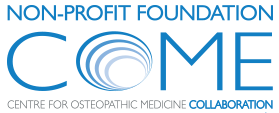The biomechanical model in manual therapy: is there an ongoing crisis or just the need to revise the underlying concept and application?
Different approaches to body biomechanics are based on the classical concept of “ideal posture” which is regarded as the state where body mass is distributed in such a way that ligamentous tensions neutralize the force of gravity and muscles retain their normal tone, as result of the integration of somatic components related to posture and balance mechanisms. When compromised, optimal posture can be restored through the balanced and effective use of musculoskeletal components; however, various research findings and the opinion of experts in this field suggest a move away from the dogmas that have characterized the idea of health dependent on ideal posture, to promote instead dynamic approaches based on the interdependency of the body systems as well as on the full participation of the person in the healing process. Following these concepts, this article proposes a revised biomechanical model that sees posture as the temporary result of the individual’s current ability to adapt to the existing allostatic load through the dynamic interaction of extero-proprio-interoceptive information integrated at a neuromyofascial level. Treatments using this revised model aim to restore the optimal posture available to the person in that particular given moment, through the efficient and balanced use of neuro–myofascia–skeletal components in order to normalize aberrant postural responses, to promote interoceptive and proprioceptive integration and to optimize individual responses to the existing allostatic load. The latter is achieved via multimodal programs of intervention, in a salutogenic approach that, from a traditional perspective, evolves on an anthropological basis, to the point of centering its work on the person.







